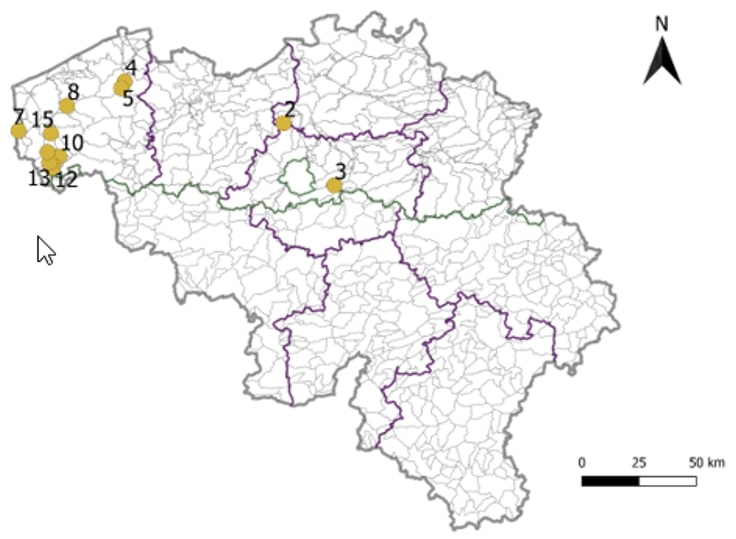Home / Reduction Plan / Charter Approach Exceedances Reference Levels Pesticides / Summary of the Emission Reduction Plan (ERP) for metazachlor
Summary of the Emission Reduction Plan (ERP) for metazachlor
The available monitoring data for metazachlor (obtained from the Flemish and Walloon governments) in surface water over the years 2013-2019 were analysed with respect to the acute and chronic water quality standards (MAC-EQS and AA-EQS). Based on this data, the main emission routes and vulnerable areas were identified and a plan for reducing emissions to surface water was drawn up.
Metazachlor is used as an herbicide in the cultivation of winter and summer rapeseed and in vegetable crops, mainly cabbage and leek. There is also an application in tree cultivation. Application takes place mainly in the period April to September in Flanders and September to October in Wallonia. This is related to the fact that application in Flanders mainly takes place in vegetable crops and in Wallonia mainly in rapeseed. The total use of metazachlor in Wallonia is clearly higher than in Flanders.
Metazachlor was analysed in 668 monitoring sites, which are evenly distributed across Flanders (362) and Wallonia (306) and spread over most river basins. Each year, between 110 and 160 sites were sampled in both regions. In Wallonia, the highest concentrations were found in October, but no exceedances of acute and chronic water quality standards were found. In Flanders, until 2017, an exceedance of the acute quality standards was found in 1.5 to 2.4% of the measurements. There has been a downward trend in these exceedances in recent years, down to 0.2% in 2019. The highest values are found in May. A similar pattern can be noticed with regard to exceedances of the chronic quality standards. 7 to 12.6% of the measurements exceed the standards with a downward trend in 2018 and 2019 (down to 3.8% in 2019).
The emission routes were studied on the basis of characteristics of the most critical locations. These are mainly found in West Flanders.

Figure 1: critical locations for metazachlor exceedances in Belgium
On the basis of the 2013-2019 monitoring data and the critical locations, we come to the following conclusions:
- The application of metazachlor in rapeseed in Wallonia, where parcels with a risk of erosion are also present, did not result in an exceedance of the standards.
- In Flanders we notice a downward trend after the introduction of the product stewardship program of Adama and BASF.
- The highest concentrations are found at locations with limited rainfall, which is an indication of point contaminations.
- Critical locations are situated in an area where mostly vegetable crops are grown on medium sensitive erosion plots. Exceedances of the quality standards coincide with periods of precipitation and thus are caused mainly by plot runoff.
- Many of the critical watercourses are bordered by fields at a minimum distance, so that spray drift can also play a role.
The emission reduction plan therefore proposes the following specific measures:
- The product stewardship program will now be promoted by all registration holders.
- It will focus on awareness of the exceedances of metazachlor and the measures to be taken during meetings with the distribution sector and professional users in West Flanders, and support them in the communication with the growers.
- It will focus on awareness of the exceedances of metazachlor and the measures to be taken by growers through posters and handouts during visits to the demo platforms.
- Mailing information regarding buffer zones and anti-erosion measures will be sent to cabbage and leek growers in West Flanders.
Registration holders of metazachlor will also focus on general measures:
- Seek cooperation between external stakeholders and Belplant to set up a regional action plan more specifically for West Flanders regarding local emission reduction to surface water.
- Provide strong support in the development and introduction of the 'closed transfer system' for filling the spray tank.